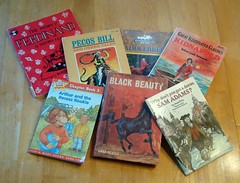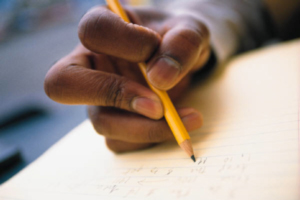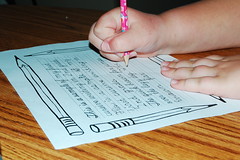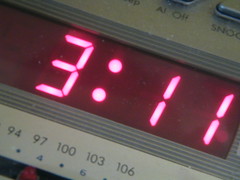Academic Skills
Children between the ages of 6 and 8 years of age are very busy developing their academic skills (see full Glossary). They are now attending school full time, and are expected to remain seated for large portions of the day. They are now using all those skills that they developed in their early years to make sense of the abstract and complex skills they are expected to learn and develop in a relatively very short period of time.
READING
Most children at this age:
- can recite the entire alphabet;
- know the difference between all upper and lower case letters;
- Pronounce complex words, such as calculator;
- blend sounds to make a complex word (for example, play and ground make playground);
- can create a new word, by removing a letter from an old one (for example, chat with no “c” becomes hat);
- know quite a few sight words (see full Glossary);
- can decode/read new simple words with ease;
- recognize many common and uncommon neighbourhood signs (for example, traffic stop signs);
- create alliterations (see full Glossary);
- substitute one letter for another, to create a new word, (for example, if I remove “b” and add “c”, bat becomes cat);
- know how many phonemes (see full Glossary) are in simple words
- understand the difference between a phoneme and a syllable;
- read sentences and paragraphs (between ages seven and eight);
- read simple books (Fig. 1) with fluency (between ages seven and eight);
- understand what they are reading (between ages seven and eight);
- predict what will happen next in a story;
- build upon what they have read, in a story, in order to create a new story (between ages seven and eight);
- remember what they are reading, and can answer questions about what they have read;
- can remember what they have read, a few days later;
- understand that a story has different parts (that is, a story has a beginning, a body and an end);
- based on the context, can sometimes figure out what an unknown word means;
- understand the difference between different types of texts (e.g. poems versus articles);
- identify nouns and verbs in texts;
- may review what they have written, in order to make it better;
- understand that books have authors, and several sections;
- can identify the main idea in a text or a story.
Figure 1. Simple books
Did you know?
- Children age 6 to 8 are very interested in and motivated to read. In fact, they read just for the sake of reading. Giving them books as gifts is highly recommended.
WRITING
Most children at this age:
- can hold a pencil using the tripod position (Fig. 2) ;
- can write continuously for several minutes;
- can write several sentences, and use punctuation;
- can draw and paint very sophisticated figures and shapes;
- may start using a “cursive” writing style;
- write simple correspondence (e.g. invitation to a birthday party);
- attempt to spell unfamiliar words;
- write legibly;
- write relatively quickly;
- spell simple words;
- spell sight words (see full Glossary);
- spell phonetically;
- copy from a blackboard (Fig. 4);
- use capital letters, as needed;
- write about their own ideas.
Figure 2. Tripod position
Figure 3. Cursive writing
Figure 4. Copying from blackboard
Did you know?
- Children this age may reverse “b” and “d”? This is a stage that a lot of six and seven year old children go through.
MATH
Most children at this age can:
- count up to and beyond a hundred;
- count up from a number other than “one” (for example, can they can count up from the number 5);
- understand part/whole relationships (e.g. whole/half);
- add simple numbers mentally (that is, without using their fingers or a paper and pencil);
- understand which of three or four numbers is the smallest or biggest;
- tell which number comes after a single digit number (e.g. nine comes after eight);
- understand class inclusion (see full Glossary)
- understand which of two groups is “smaller” or “bigger;”
- know that there is a difference between numbers and letters;
- know that numbers represent quantities;
- tell time with a digital clock (Fig. 5);
- add single, double and three digit numbers;
- subtract single, double and three digit numbers;
- understand the terms “more”, “less”, and “same;”
- complete complex patterns (e.g. red triangle, blue square, red triangle, blue square);
- understand simple fractions (e.g. a quarter of the pizza is yours);
- solve simple word problems (e.g. if I have two candies and you give me two more, how many will I have?);
- identify most geometric shapes (e.g. octagon).
Figure 5. Digital clock
Did you know?
Most children who are afraid of math, or don’t like it, are not aware that they use math every day. Try pointing out to a child that he or she uses math all the time, and he or she may not be that afraid of the term. For instance, try telling children that they use math every time they:
- divide a pizza so everyone gets a slice;
- cut a birthday cake so everyone get a piece;
- ask for a raise in their allowance;
- ask why another child got more of something;
- insist on getting the same amount of candy as their brother or sister;
- wonder if they can “afford” a certain toy;
- save up to buy a favourite toy.





0 comments
Kick things off by filling out the form below.
Leave a Comment